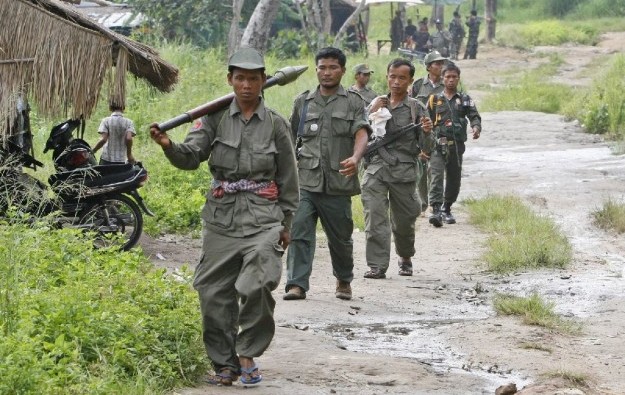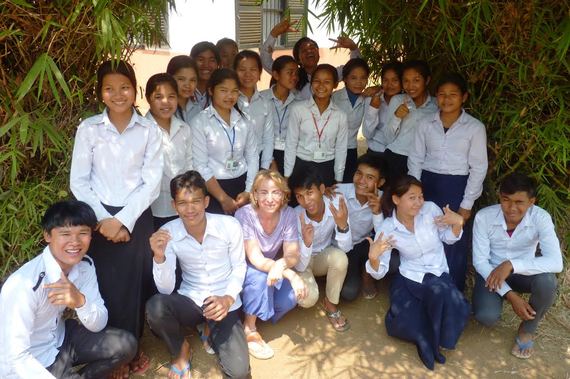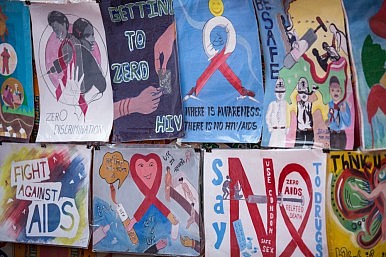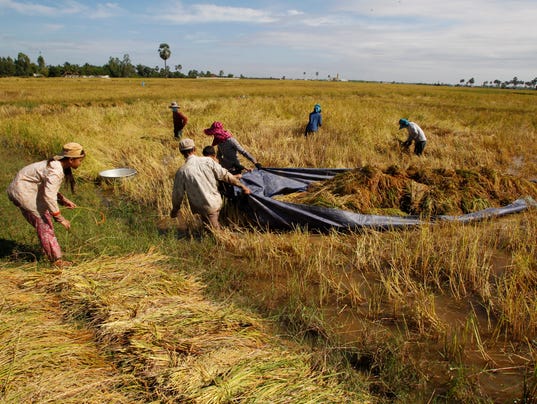(Photo: Heng Sinith, AP)
TAKEO, Cambodia — The world turned blue and green as my sickle swept through rice stalks. Our gang was silent and sweating in the sultry afternoon. The only sound was the crackle of breaking stalks and the slop of feet in monsoon-fed water. An old lady, in baggy pajamas (acceptable daywear in Cambodia), stopped and whirled an armful of stalks into a binding sheaf.
The Southeast Asian landscape is dominated by emerald rice paddies, dotted with workers, bent like apostrophes. From the windows of buses and trains, foreigners gaze at these postcard vistas, and dream about a simpler, more bucolic life.
While some people long to escape rice paddy labor, for many Cambodians, their fields are labors of love that provide sustenance and income. Indeed, the loss of their fields (sometimes through forced eviction) is one of the main reasons people take work at remote factories, and even sometimes fall into prostitution.
I wondered, what is it like to actually work in those fields?
So I joined a family of farmers to harvest one of their fields in Takeo — a province that borders Vietnam. Rice fields fanned out in all directions. Different plots were marked by sticks bearing plastic bags that fluttered like flags. Sown at different different times of the year, some fields were still bright with young plants while others were brown and heavy with grain.
About 75% of Cambodia's 10 million people are farmers. A family typically farms just a few hectares, each of which brings in up to $1,000.









 ស្ពានឫស្សី ឆ្លងទៅកោះប៉ែន នៅកំពង់ចាម ដែលមានទាំងមនុស្ស និងទាំងឡានម៉ូតូយ៉ាងច្រើន គួរអោយព្រឺ. The people, motorcycles and cars are waiting on a bamboo bridge to cross to Koh Pen (Pen Island) in Kampong Cham province. It looks like the bamboo bridge is going to collapse any time, but the people seem undeterred.
ស្ពានឫស្សី ឆ្លងទៅកោះប៉ែន នៅកំពង់ចាម ដែលមានទាំងមនុស្ស និងទាំងឡានម៉ូតូយ៉ាងច្រើន គួរអោយព្រឺ. The people, motorcycles and cars are waiting on a bamboo bridge to cross to Koh Pen (Pen Island) in Kampong Cham province. It looks like the bamboo bridge is going to collapse any time, but the people seem undeterred.








 Tue, 30 December 2014
Tue, 30 December 2014








